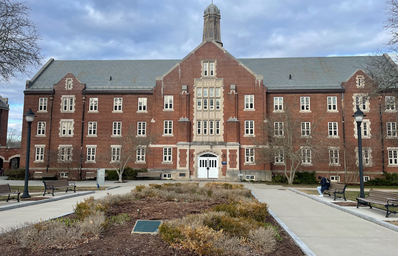As housing selection time nears, questions my friends always have each spring around this time include where to live, how big the rooms in each space are, and if they even have enough credits to get into a specific housing assignment. As a rising senior who has been exposed to all different types of housing, as well as the pros and cons of each space, I know how important housing is for students and how easily it can determine the experience someone has for their next year of college. This comprehensive guide to each on-campus housing option can hopefully give you a better idea of what you and your friends may want to aim for next year, help you better understand a housing option you already chose, or maybe lessen your fears about seemingly less-favorable options.
Since housing pick-times are based on total amount of credits (students with more credits get to pick earlier and therefore have more options), some housing options may be much more difficult to select than others! UConn ResLife updates yearly statistics on how many credits residents usually have per housing assignment, but options can vary based on students’ yearly housing preferences or external circumstances that can alter a student’s choices.
Some on-campus housing options are not included in this list as they are reserved for select groups. These locations include: Husky Village (reserved for Greek Life), Buckley/Shippee (reserved for first-year Honors students), Towers (reserved for incoming freshmen), Werth Tower (reserved for Learning Communities), and Northwood Apartments (primarily for graduate students).
Disclaimer: All credit estimates are based on statistics and experiences from previous years, and credit totals to pick a spot in any dorm can change depending on the academic year/semester. Always have a contingency plan, or multiple options, so you’ll always be satisfied with your ultimate pick!
hilltop apartments
Typical credits required to certify a spot: 90+
Resident type: Seniors, some Juniors
Price range per year: $9,712 (double efficiency), $12,528 (4-person), $14,518 (2-person)
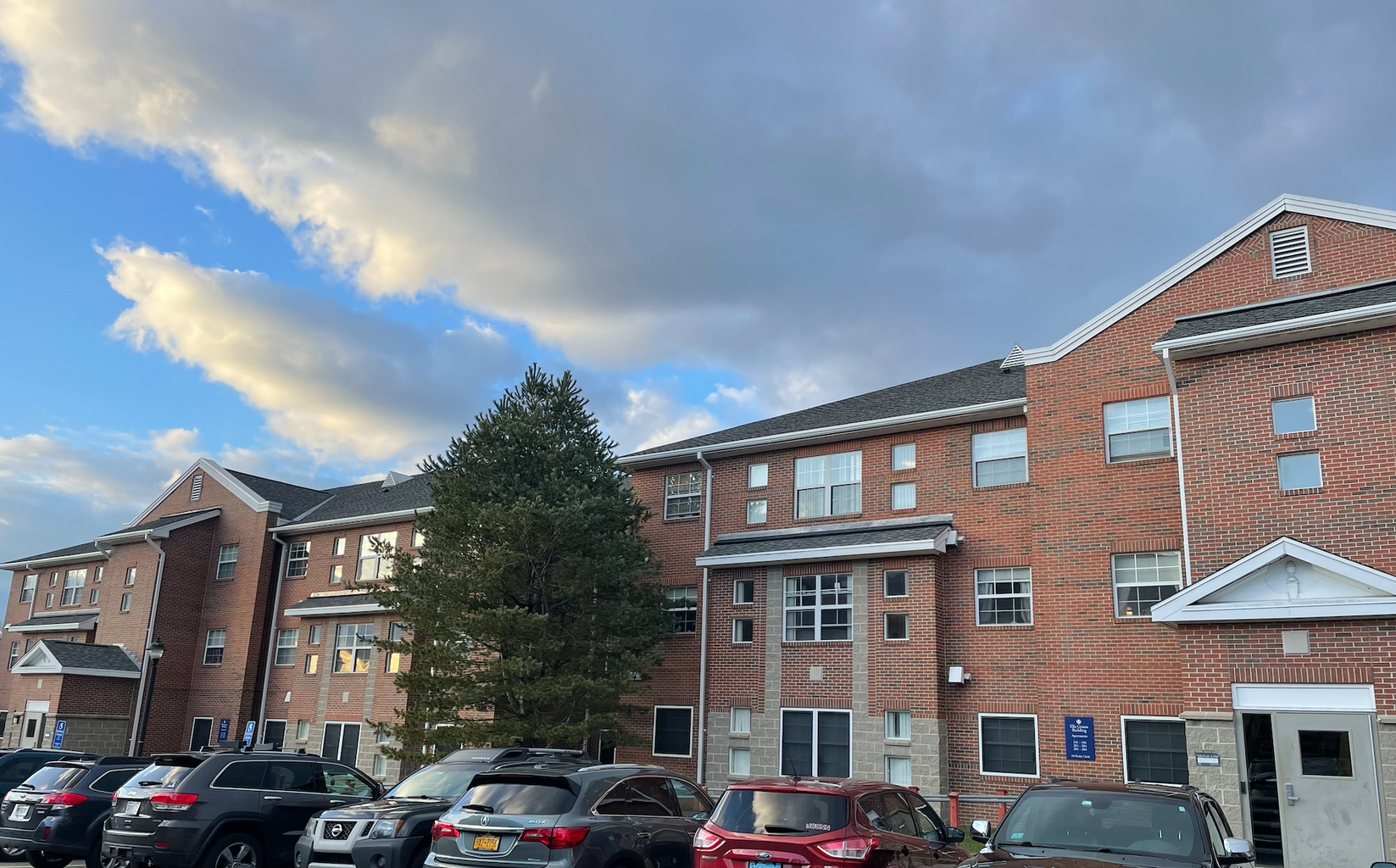
The most highly-coveted area to live in that still qualifies as on-campus housing is none other than Hilltop Apartments, a residential complex comprised of 13 buildings with apartment-style living for 2-4 students. Hilltop Apartments are located near the Football Practice Fields and the UConn Athletic District.
Hilltop contains three types of rooms: double efficiency dorms, 2-person, or 4-person apartments. Double efficiency rooms are reminiscent of a studio apartment, with two twin XL beds and a couch in a large common room-like area. Meanwhile, 2- and 4-person apartments allow residents to have their own rooms with full-size beds. All rooms also come equipped with a bathroom (4-person apartments have two bathrooms, one per two roommates), a full kitchen, and a washer and dryer. Students who live here are not required to purchase a meal plan, as they have full access to their own kitchen and can meal prep depending on their needs. The only cons about Hilltop are that it is the most expensive tier of housing and it is decently far from the center of campus. Many students living here have a car to make traveling easier (Hilltop has full parking lots). However, students do not need a car to live in Hilltop, and depending on which building you live in, the walk is definitely not far behind Putnam Dining Hall and Garrigus Suites!
However, because of the location and amenities offered, Hilltop is always the first housing option to reach capacity during the selection process — typically on day one. To assure you have a spot (especially if you want a double efficiency, since there are not many rooms per building and only one building has solely double-efficiency-styled rooms), it’s recommended that the person selecting housing (for themselves or for a group of roommates) has 90+ credits. However, this total varies depending on the year, and many people still get into Hilltop with 80-90 credits.
CHARTER OAK APARTMENTS
Typical credits required to certify a spot: 60-85
Resident type: Juniors, some Seniors
Price range per year: $9,712 (2 bedroom, 4 person), $12,528 (4 bedroom, 4 person), $14,518 (2 bedroom, 2 person)

When looking for apartment-style living that is still classified as on-campus housing, Charter Oak apartments are another great option for 2-4 students who wish to live together. Like Hilltop, each apartment comes with a full kitchen, living room, bathroom, and laundry area. Students can select a 2 bedroom/4 person unit (two XL twin beds per room), a 4 bedroom/4 person unit (four full-size beds), or a 2 bedroom/2 person unit (two full-size beds). Students who live here are also not required to purchase a meal plan and many opt-in to just purchasing groceries, as the apartment amenities are much more convenient.
Like Hilltop, Charter Oak is also an expensive housing choice. However, a significant con is that the apartments are just off of Discovery Drive and near the Innovation Partnership Building, meaning it is much more out of the way from campus than other housing options. Many students who live here intend to bring a car to campus and park close to their rooms. The campus buses do have services to the Charter Oak area as well as the neighboring Busby Suites, but if you’re not great with busing or prefer to walk to your destination, then Charter Oak may not be the most efficient option.
Despite its distance from campus and other locations, Charter Oak is still usually the second or third housing option to reach capacity during selection time. You would also typically need 80+ credits to assure a spot in any of the options offered by Charter Oak, but options may vary. Typically, there are fewer 2-person apartments, so they tend to be selected earlier by students with more credits. Meanwhile, Charter Oak has more 4-person apartments, and therefore students with a variety of credits can select them. However, students with 65+ credits will likely find some housing options open by their selection time.
SOUTH CAMPUS
Typical credits to certify a spot: 45-60 Honors Students, 56-78 Non-Honors, 95-100+ Suites Single
Resident type: Juniors/Seniors, some Sophomores
Price per year: $9,112 (Suites Double), $9,712 (Suites Single), $8,174 (Quad/4 Person)
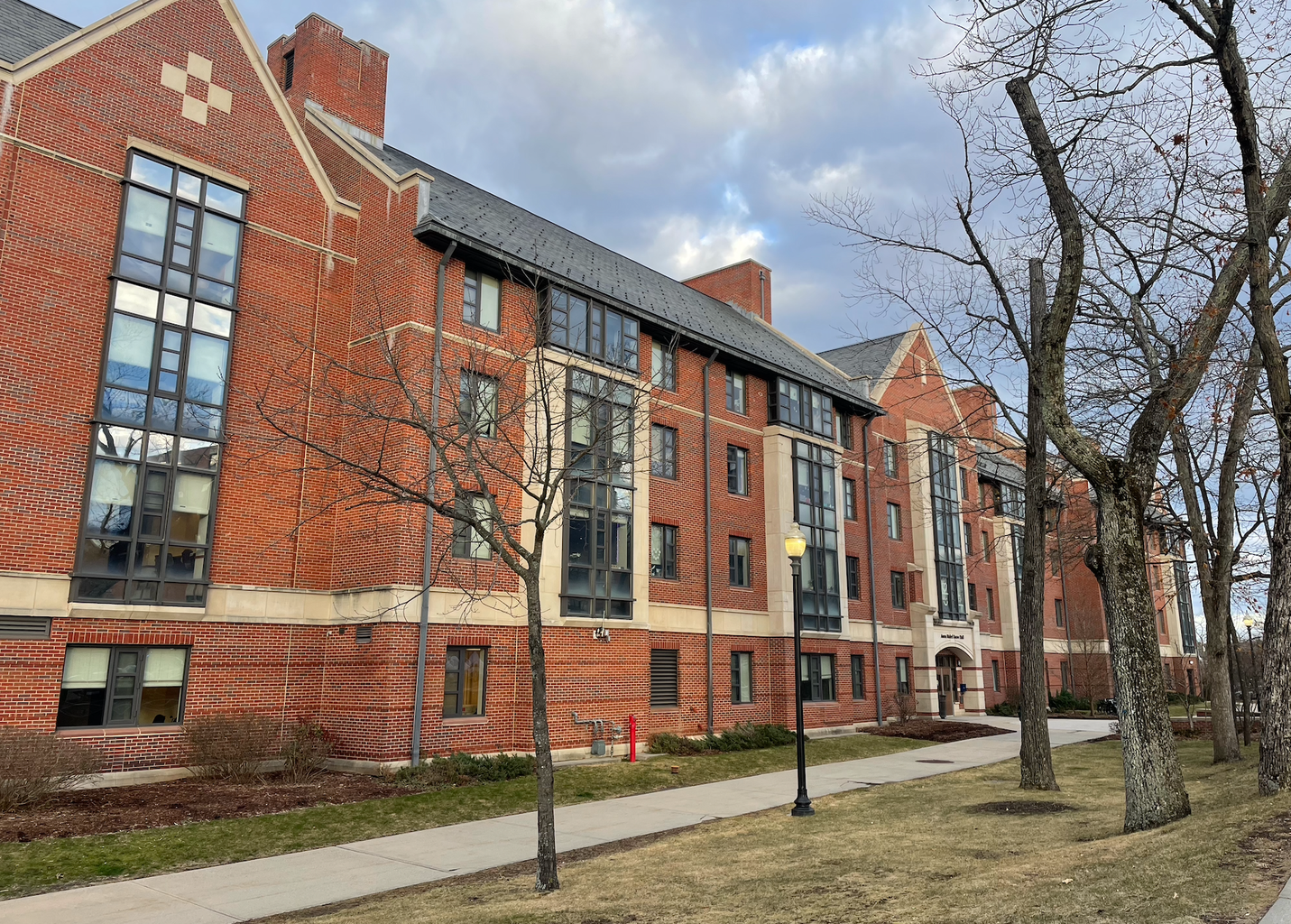
If you’re looking for a suite-style living space with more room than a traditional dormitory, South Campus is the perfect place for a group of four students. Suite Double rooms include a shared living room and bathroom, heating and air conditioning, two bedrooms (A and B), and four XL twin beds. The living room is the perfect place for a suite of four to decorate to their liking, set up their microwave and fridge, and turn their suite into a cozy place for studying, sleeping, or just hanging out. Suite Single rooms lack a living room, but allow a resident to live solo and either have or share a bathroom with another Suite Single. South also hosts a few Quad/4-person rooms which were converted from lounges. Like the other dorms, they come with dressers, beds, and desks for all residents, as well as 1-2 sofas.
South is easily the shortest walking distance away from every essential spot for students. It is the closest dorm to Storrs Center (besides Shippee/Buckley) and a brief walking distance from the UConn Rec, Bookstore, and Homer Babbidge Library. Although residents of South require a meal plan, adjacent to the dorms sits South Dining Hall, one of the more popular dining halls for students. Location-wise, South is the perfect place to live, and should definitely be an option if you have a group of four friends looking for a convenient type of living.
The only temporary con of living in South in the 2023-2024 academic year is the ongoing construction for the new South residence hall being built across from the current suites. Construction starts early in the day, and it’s sometimes hard to navigate around the area due to the blocked-off areas. The views are no longer perfect like they once were, but I’m confident South will reach its former glory once more when construction finishes in 2024. Another personal con is the size of the rooms. The A and B rooms for a 4-person suite are divided so two residents live in one room. However, the room is a bit more cramped than typical dorms (a dorm in Northwest seems to be bigger than a room in South), and it may be a bit difficult to determine the layout (bed, desk, accessory locations) of the room, especially if you have a random roommate or are unable to communicate preferences!
Getting into South always varies per year. Snow, one of the South buildings, is reserved for Honors students who are competing for their own housing spots, so the other buildings vary per year based on the competitiveness of housing. Oftentimes, South singles are taken almost immediately, where usually only the earliest pick times have access. On the other hand, 4-person suites tend to vary. If you know who you’re rooming with, the person with the highest credits can always pull in roommates with lower credits. Students who are most likely to certify a spot tend to be juniors or seniors, with credits ranging from 60 to 80. South is always a great option, especially if you have a good group of roommates and spend a lot of time on campus!
garrigus suites
Typical credits to certify a spot: 56-78
Resident type: Juniors, Sophomores
Price per year: $8,174 (Triple), $9,112 (Double), $9,712 (Single)
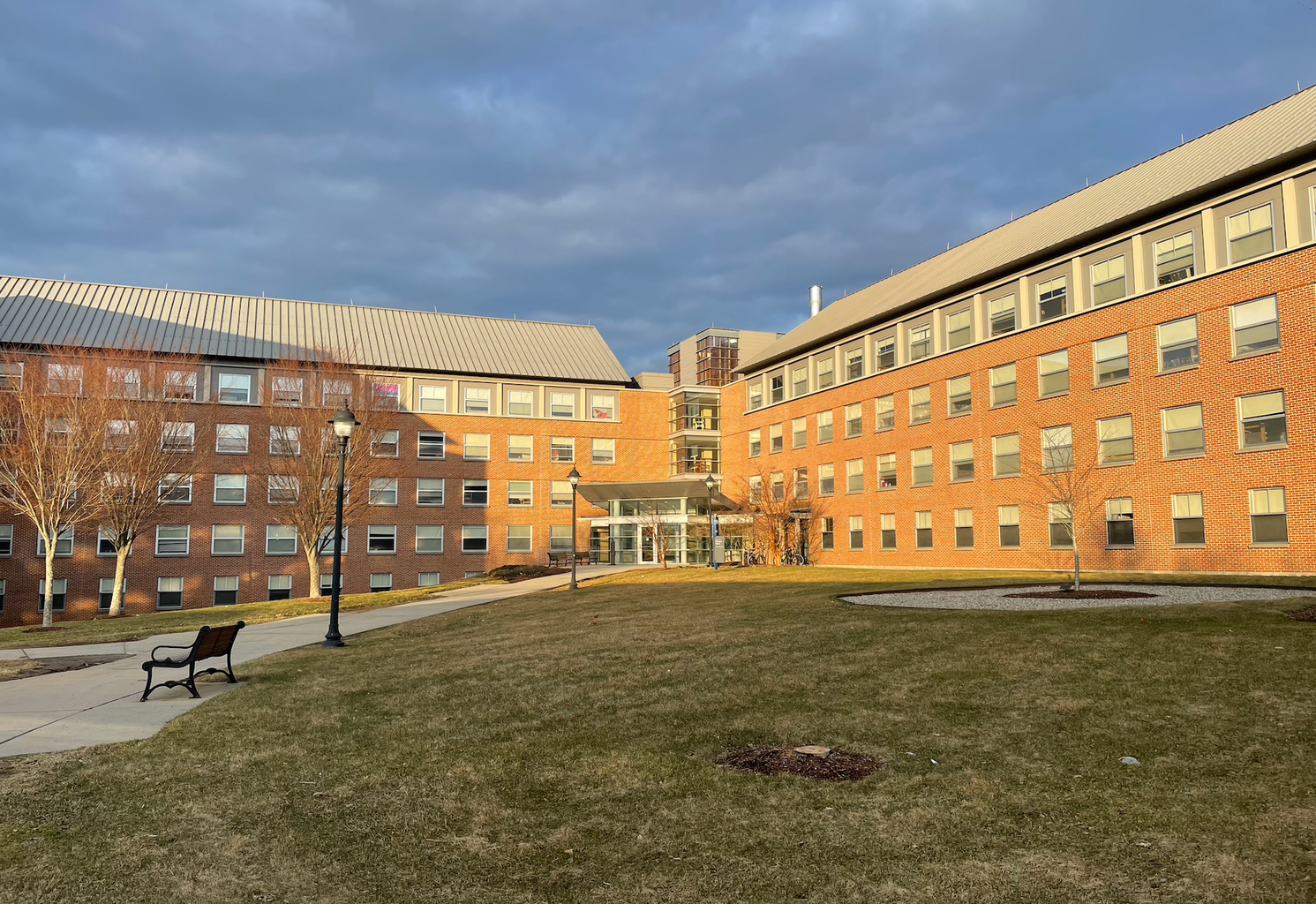
Next to Werth Tower and up the hill from the George J. Sherman Family Sports Complex, Garrigus Suites offer the most unique suite-style living on campus. Triple suites involve a spacious bedroom with XL twin beds for three residents, as well as tall drawers and a shared closet area to shelve and hang items. Residents also get the perk of a room-connecting bathroom, only shared by the adjacent triple suite. Garrigus doubles and singles have similar situations, although like other dormitory singles, these rooms are among the first to go during housing selection due to their convenience.
Everything about a 3-resident room is unique — especially considering the layout. Setting up a 266-square-foot room with three beds, three desks, and three dressers can seem like a tough task, although most residents have never reported the layout being a problem. Most students enjoy the spaciousness each suite has, especially if you live on the 4th floor (top floor = higher ceiling)! Some athletes are either assigned or choose to live in Garrigus since the housing is close to the Natatorium and the Athletic District. Many students are fond of the amenities, including its proximity to the center of campus, Putnam dining hall (one of my personal favorites), and the famous Gampel Pavilion. Garrigus also has its own game room, in case you need a way to entertain yourself with a game of ping pong or pool. As one of the more spacious suites that follow an untraditional style, Garrigus is an interesting choice that makes housing selections for odd-numbered friend groups (or the infamous BFFs of three) a much easier decision.
Depending on your housing situation and personal preferences, Garrigus can either have no cons or many. With three roommates sharing a room, the chance that you’ll have the room completely to yourself is smaller than when living in a traditional double. That being said, living with random roommates can either be a great or difficult experience in Garrigus. I’ve had classmates form a new friend group out of their suitemates and nextdoor neighbors. The opposite can likely also be said about having two roommates that you don’t get along with at all. Even with a perfect suite of three, there is a chance of sharing a bathroom with suitemates that don’t share the same ideals with you, particularly pertaining to tidiness and how often the bathrooms deserve maintenance. There’s also the slight chance that your nightly bathroom routine gets interrupted by someone who gets ready at the same time.
The best-case scenario for living in Garrigus tends to be living with two people you’re already comfortable with and being side-by-side with other friends. However, don’t let this deter you from living there! Garrigus has always been a popular option (and therefore rooms can get filled pretty quickly). Its location on campus is ideal, and even random roommates can end up becoming the closest of friends. However, if you highly value a private space or are more cautious about roommates, another building may suit your needs better.
busby suites
Typical credits to certify a spot: 27-40
Resident type: Varies on year (Sophomores, Juniors, sometimes Freshmen)
Price per year: $8,174 (Triple), $9,112 (Double)
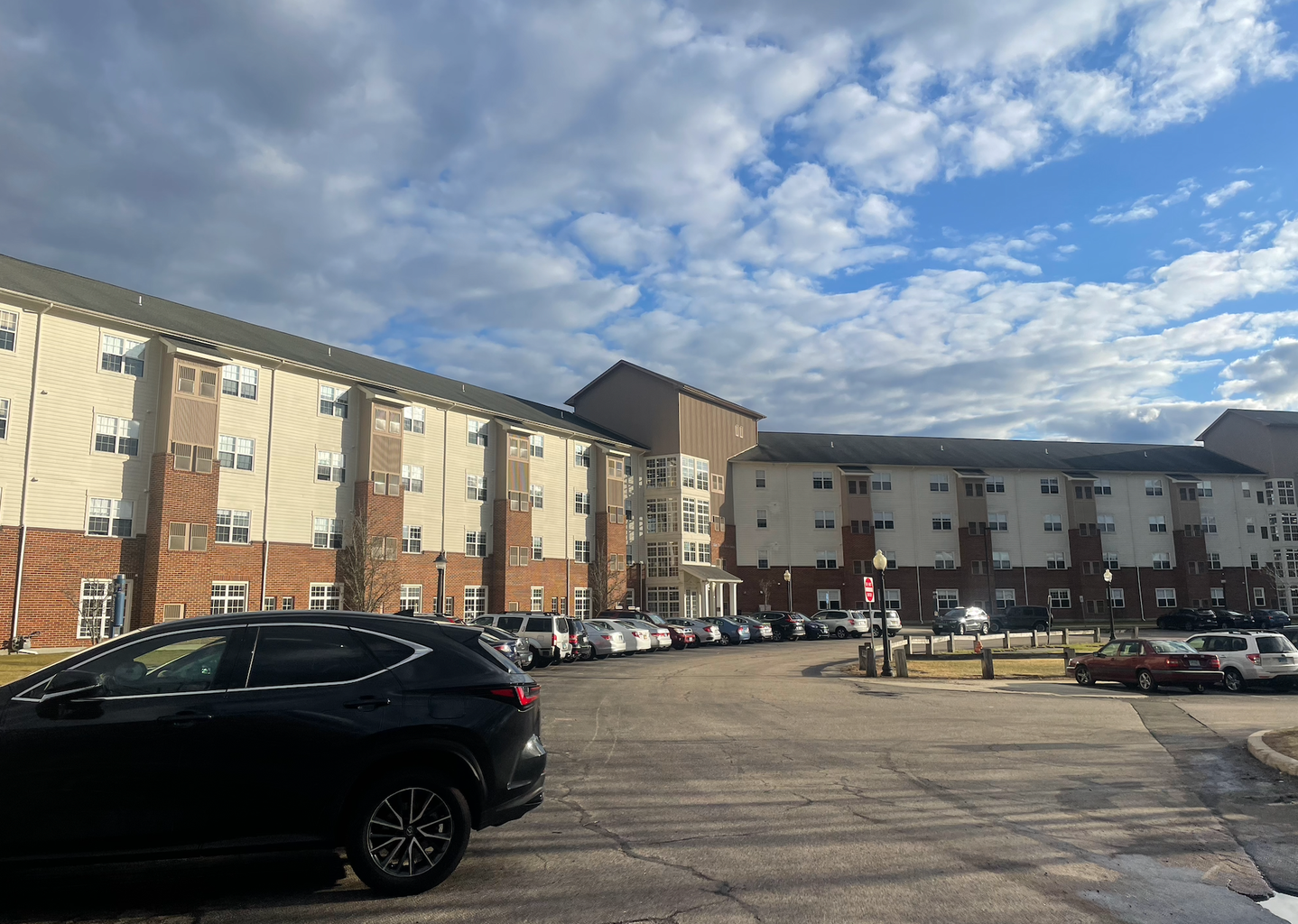
Not far from Charter Oak Apartments is Busby Suites, a four-floor building that offers triple suite-style living for three residents. Like Garrigus, rooms are between 293 and 387 square feet and contain the same furniture and XL twin beds for three residents. Like Garrigus, neighboring suites are connected at the center by a bathroom that is shared by six suitemates. Though a shower curtain is provided at move-in, residents are solely responsible for the cleanliness and supplies in the room.
The second floor of Busby Suites is reserved for the Transfer Connections House learning community, where students are able to live in six-person suites with other transfer students. However, the rest of the building is open to the general housing population.
Like Garrigus, some pros of Busby include the suite-style living situation and the private bathroom, which many students value in comparison to dormitory living with communal bathrooms. The bathrooms at Busby also tend to be slightly bigger and in better condition than those at Garrigus. That being said, Busby Suites have the same cons of suite-style living as Garrigus or South. However, Busby is much farther away from campus than Garrigus, and since students who live in Busby are mostly sophomores and juniors, the chances of having a car on campus are much lower than when living in Charter Oak Apartments as an upperclassman. Many students from Busby complain that going up the hill to the building, especially during poor weather, can be quite annoying when returning to their rooms. Another con of Busby is that students living there, like the other suites, are required to have a meal plan, and the closest dining hall to Busby is either North or Northwest.
Despite the distance, Busby tends to be the last suite-style living option to fill up during housing selection. To many, it is still a really great suite experience and is a more accessible option for rising sophomores and juniors in groups of three to six who wish to live in suite-style dorms.
HILLTOP halls (HALE/ELLSWORTH)
Typical credits to certify a spot: 48-60
Resident type: Juniors, Sophomores, Freshmen Athletes
Price per year: $7,436 (Double), $9,112 (Single)
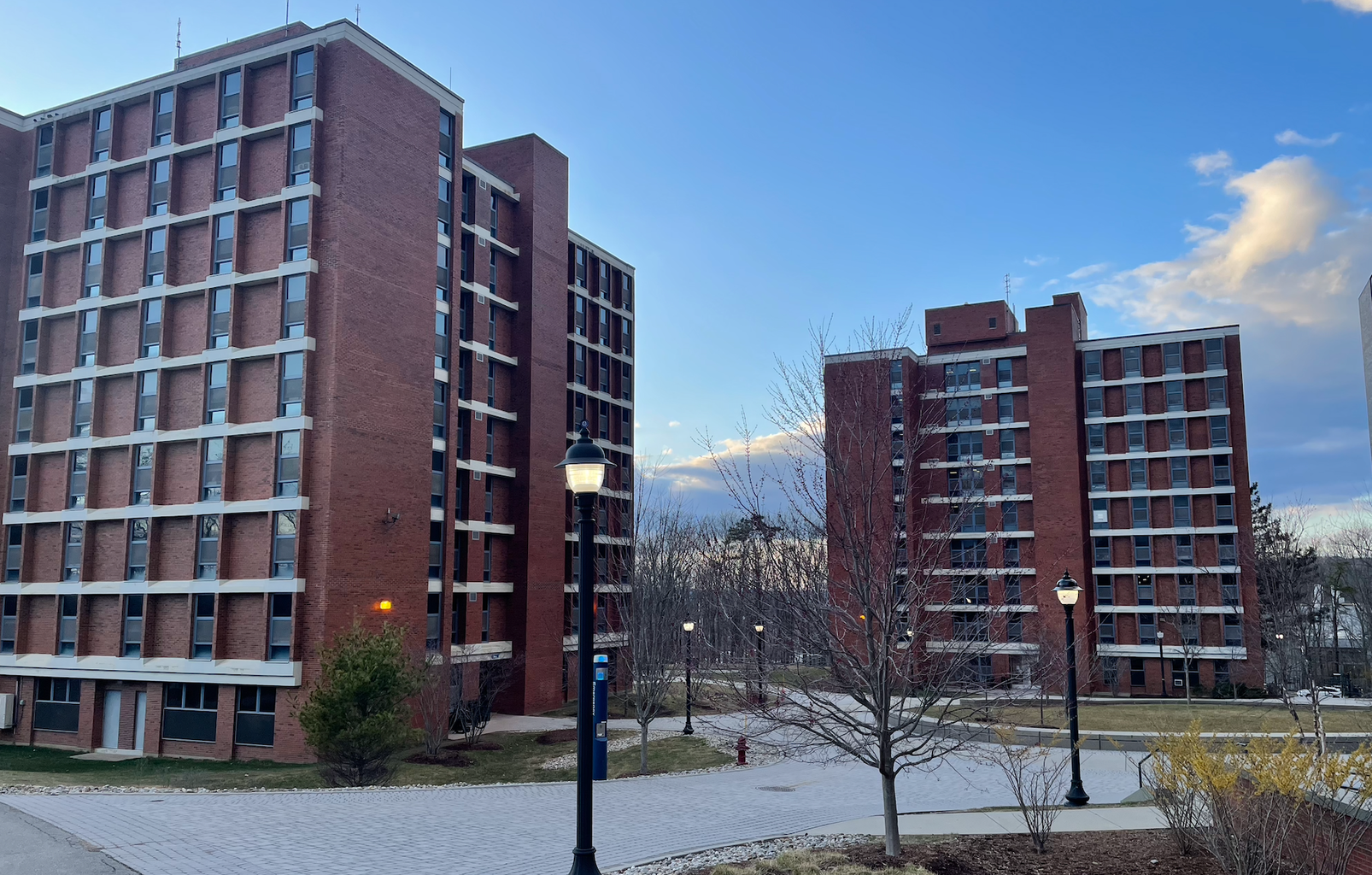
Not to be confused with Hilltop Apartments, Hilltop Halls are identical buildings behind Werth and Garrigus, adjacent to Putnam dining hall. Hale and Ellsworth offer more spacious traditional doubles (186 square feet vs. 153 in Northwest) with single-sex floors. Like all on-campus housing, rooms are equipped with dressers, desks, and XL twin beds. However, Hilltop rooms also come with spacious closets built into the walls to shelve and store items. Rooms also include a window with a ledge large enough to sit on. If you enjoy cozying up to a book or movie during a rainy or snowy day, Hilltop rooms give you the easy opportunity to curl into the corner of the ledge and relax to the sound of the weather. Singles in Hale/Ellsworth follow a similar layout, but rooms are about 108 square feet and are usually grouped separately from the double dorms and are toward the elevator/stairs. These buildings typically house juniors or higher-credit sophomores, as well as athletes for swimming, baseball, and sometimes freshmen basketball.
Surprisingly, there are little-to-no cons to living in either Hale or Ellsworth. Residents have the same benefits location-wise as living in Garrigus or Werth Tower, and the Purple and Red Lines, which have bus routes around the most important campus stops, can be directly reached outside the back entrance of Hale. Each building has a classroom on the first floor with a whiteboard for studying, as well as a spacious lounge room for group activities. Unlike Werth, which requires RA permission, Hale and Ellsworth have open kitchens with a microwave, oven, and stove. Although, like all traditional dorming assignments, residents are required to have a meal plan, having an open kitchen is always beneficial if you have a craving! If you have a bike, each building has a room with indoor bike racks, although bike racks can still be found directly outside the dorm. Finally, both buildings directly face a sanded Volleyball court as well as a green space that is blocked from traffic. Residents easily have a sunny place to relax, eat, or play a lawn game with friends when the weather is warm. In terms of traditional doubles, pricing, location, and efficiency, Hilltop Halls are easily the best option!
alumni
Typical credits to certify a spot: 55-60 (Doubles & Triples), 90+ (Singles)
Resident Type: Freshmen, Sophomores, Junior
Price per year: $7,436 (Doubles/Triples), $9,112 (Single)

Adjacent to South Campus, Alumni Quad has a variety of traditional dorming options, including singles, doubles, and triple dorms for students. Traditional double rooms are spacious, with most rooms being between 179-182 square feet with the same amenities as a typical double. With these rooms, Alumni ranks under only Hilltop Halls for having the biggest space for traditional doubles. Each floor also has one or two 253 square feet triple dorms, which are similar in layout to Garrigus Suites but lack a private bathroom. Finally, singles are typically 140 square feet and are sparse.
Like its dorms, Alumni also has the greatest variety of both under- and upperclassmen. Learning Communities take up a decent amount of space out of the four buildings, and are home to Connecting with the Arts House, Human Rights and Action House, Humanities House, Business Connections House, and Fine Arts House.
Though the view and location of Hilltop Halls is nice, it does not compare to the convenience that comes from living at Alumni. Alumni dorms are close to multiple good dining locations (South and McMahon) and are within a 10-minute walk to Storrs Center, which is convenient for students who tend to drop by Insomnia Cookies, CVS, or Price Chopper for groceries. Though not as conveniently located as McMahon or West, Alumni is still within a short distance of the UConn Rec, Homer Babbidge Library, and the Bookstore.
A particular con of Alumni is the lack of sufficient laundry services in the buildings. Unlike some buildings that have 10-20 washers and driers, Alumni Quad has less than 10 for an entire building. In recent years, Alumni has also become a lot more difficult to get into, especially with the increased requests by students for on-campus housing post-COVID. Alumni used to mostly consist of sophomores and juniors (besides freshmen in Learning Communities), but recent years have seen mostly juniors and high-credit sophomores with 50+ credits getting spots. However, housing needs change yearly, so always keep your eye out if you’re looking to live here!
MCMAHON
Typical credits to certify a spot: 23+ (Honors Doubles), 25-35 (Doubles)
Resident Type: Sophomores, some Juniors
Price per year: $7,436

At the corner of the center of campus and in arguably one of the best positions on campus is McMahon. McMahon consists of two towers (North and South) with traditional 154-square-foot doubles. Some floors are co-ed, but there are two floors per tower that are single-sex. McMahon is home to the Global House Learning Community floor as well as a few floors reserved for Honors students. The rest of the floors are usually filled with sophomores and some juniors. McMahon dorms come with the same amenities as any traditional double would. The towers are connected in the middle by level “M,” which consists of study rooms, lounges, and game rooms that include TVs with HDMI cables, pool tables, and ping pong. The ground floor of McMahon includes the laundry room and the entrance to McMahon dining hall, only one of two dining areas on campus that is open until 10:00 p.m. from Sunday to Thursday. McMahon is also one of few dining halls with an omelet bar at breakfast, and has weekly taco Tuesdays and burger bars during “late night” dining hours. Not only is this convenient if your dinner schedule is flexible (all dining halls close by 7:15), but it’s also convenient when the heavy snow or rain deters your interest in going out for food. McMahon is also close to South dining hall if you’re looking for other nearby options.
Also described in the review for West, McMahon has always been a convenient choice in terms of location, as its close to the UConn Rec, the Bookstore, and the Union. Being practically at the center of campus, all buildings (the Union, Gampel, McHugh, Monteith) are within a 5-to-8-minute walk away.
The only con to McMahon is the size of the rooms. McMahon doubles are significantly smaller in comparison to Hilltop Halls or Alumni. This is usually not a problem for residents unless they have a difficult roommate. However, these rooms are certainly a reliable option for housing, especially in your sophomore year since freshman-year housing is so far from the center of campus.
EAST CAMPUS
Typical credits to certify a spot: 25+ (Doubles), 75+ (Singles)
Resident Type: Varies on year (Sophomores/Juniors/Seniors)
Price per year: $7,436 (Double), $9,112 (Single)

In the oldest part of campus (and only a short distance from the Dairy Bar) lies East Campus, comprised of five different resident hall buildings that provide a very antiquated, cozy, and homely living experience. East campus provides traditional dorming with singles and doubles. All rooms come with basic furniture, as well as a small closet for storing hanging items. Most floors in Sprague, Whitney, and Grange are co-ed, while Holcomb and Hicks are female-only buildings. Female-only buildings have an all-gender bathroom toward the laundry room, so male guests would not have a problem when it comes to restrooms.
Room sizes in East heavily depend on the building. Holcomb, Sprague, and Whitney house mostly singles over doubles. Holcomb singles can range between 131 to 157 square feet, while Sprague singles are merely between 106 and 109 square feet, and Whitney singles can range anywhere from 77 to 135 square feet. The size differences are clearly heavily dependent on which building you choose. However, doubles in all five buildings tend to be more consistent, ranging from 150 to 190 square feet. All of the buildings also offer a greatly limited number of triples, which follow a similar situation as triples in Alumni. Triples are typically between 241 and 273 square feet, but Whitney triples are more spacious with approximately 320 square feet of space for 3 residents.
One of the biggest pros regarding living in East is its distance to Whitney dining hall. Whitney, the most recent dining hall to receive renovations, is undoubtedly the coziest, most comforting place to eat on campus. Residents are allowed to add to Whitney’s music playlist, and songs are softly played throughout the dining hall during operating hours. Whitney has a full omelet bar in the morning (and is my personal favorite place to get breakfast), and though the options are sometimes limited, Whitney consistently has good food and options for every dietary need. The dining hall even has a quieter cafe area for students to eat and study! East is also the closest dorm to the Austin building, Wilbur Cross, Horsebarn Hill, and Storrs Center.
The most evident con about East is its distance from campus. Being that East only provides traditional dorming that can be experienced in another building, such as McMahon or West, it seems that there are much better options for housing if your priority is location and efficiency. Though next to the bustling traffic of Storrs Road, the dorms themselves are decently quiet, and residents tend to keep to themselves. This can definitely be beneficial for students who value a more tranquil environment, but also a con as students sometimes feel spooked by its distance from campus and its quietness as the sun sets. Alongside this, the laundry machines for each building are sparse, providing less than three washers and driers for an entire building to use.
Evidently, the amenities and location for East may be lacking in comparison to other dorms, but is definitely a reasonable option, especially if you value a more private, peaceful living experience.
West campus
Typical credits to certify a spot: 27-40
Resident Type: Sophomores, Juniors
Price per year: $7,436 (Double), $9,112 (Single)
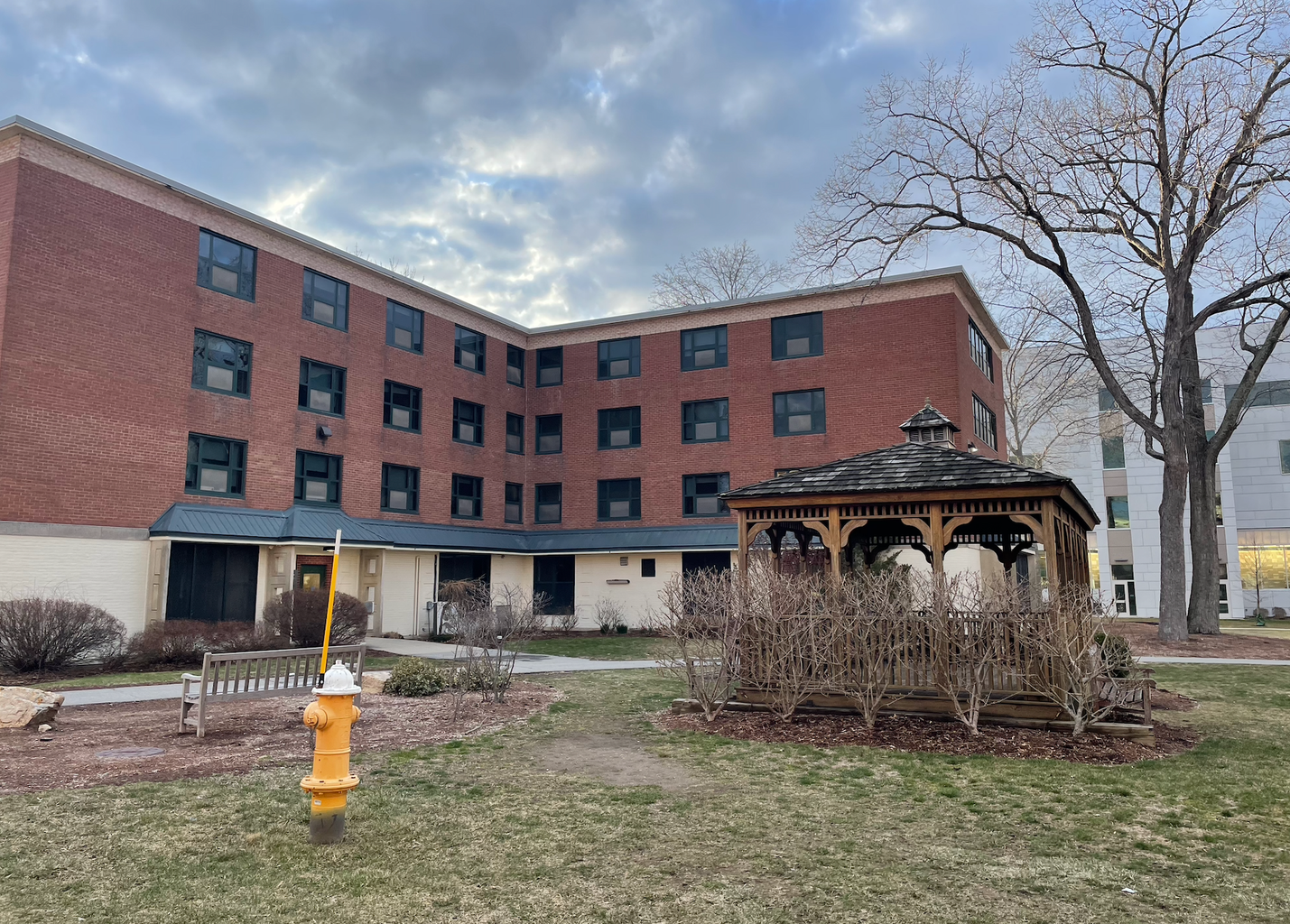
Across from McMahon and directly next to the UConn Rec is West Campus, the only dormitory located directly at the heart of campus. West dorms consist of traditional 156 square feet doubles or singles and have single-sex floors with handicap access. Although rooms aren’t air-conditioned (most traditional doubles aren’t), West has air conditioning in their study lounges. A gazebo lies at the center of the four buildings, with sanded volleyball courts and occasional picnic tables for early fall and spring activities.
From the mentioned amenities, it seems at first glance that West has nothing more to offer than any other traditional dorm. However, West’s draw comes from its extremely convenient location. McMahon can be equally convenient, but is a bit more difficult to get into because of the reserved floors for Honors students and Learning Communities. West is directly next to the UConn Rec, which is always a perk if you catch yourself often skipping a workout session because the Rec is “too far.” West is also near South dining hall and McMahon dining hall, giving residents plenty of options for food (or a late night snack at McMahon). If you’re not in the mood for dining hall food, West is also a short distance from the UConn Bookstore’s Starbucks, as well as the Student Union and its plentiful options for snacks. For classes, West is near all the necessities — including ITE, the Business Building, and Homer Babbidge Library. Finally, West is the closest dorm to Gampel Pavilion, which is always convenient if you find yourself going to games often!
At 156 square feet, the rooms at West are noticeably smaller than the typical traditional dorms at UConn, which is a significant con when considering how hot the summer/early fall heat can be in a cramped room. The rooms are also older than some of the other buildings on campus, meaning they are also more prone to issues and maintenance. However, West’s location is the most ideal, and you can’t get that kind of convenience anywhere else.
northwest
Typical credits to certify a spot: 23+
Resident Type: Freshmen (occasionally Sophomores)
Price per year: $7,436 (Double), $9,112 (Single)

It’s easy to say that Northwest has to be the best of the three freshmen dorms at UConn, and is even a sufficient place to live as a sophomore if options are limited. Like all other traditional dorms, doubles consist of a 152-square-foot room with all the same furnishings. Floors are a combination of single-sex and co-ed. Compared to Towers and North, Northwest is located in the most ideal position, and is home to the only other late-night dining hall open until 10: Northwest dining hall. I have always found Northwest to have the most consistently good options, but I’ve learned that whenever there are churros, chicken tenders, or Chinese food for dinner, the line for food always goes out the door. Dorms are also within walking distance of North dining hall.
The building is ideally located across from the STEM buildings, including the Biophysics Building and Gant. Although not directly across, the Chemistry building is also a short walk away if needed! The dorms are also within walking distance of Sam’s, Sgt. Pepperoni, and Wings Over, which are three student-favorite stops for late-night cravings.
honorable mention: NORTH
Typical credits to certify a spot: 20+
Resident Type: Freshmen (occasionally Sophomores)
Price per year: $7,436 (Double), $9,112 (Single)
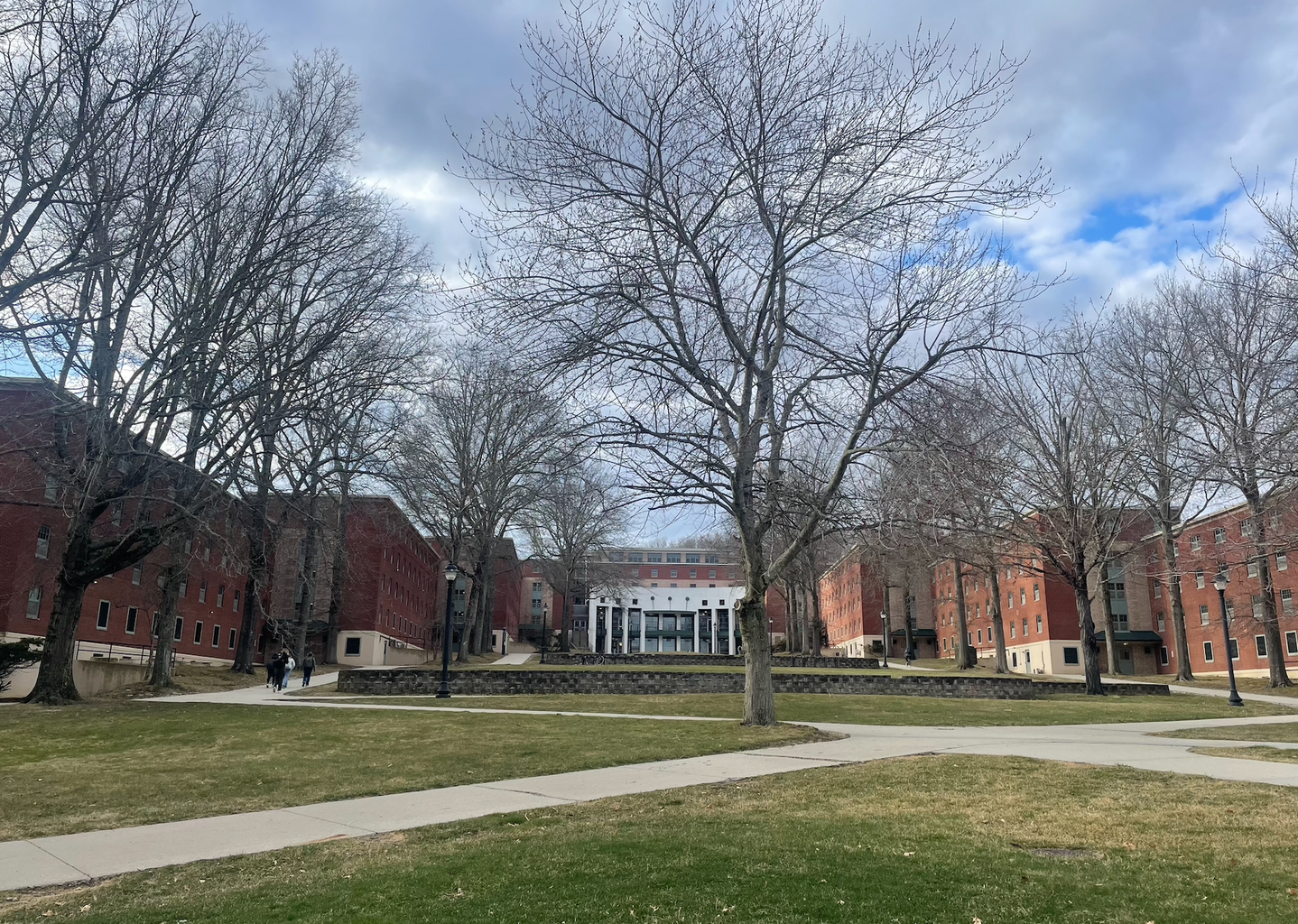
Oftentimes a mostly Freshmen dorm alongside Towers, North has gained notoriety for not being the most beneficial place to live on campus. North has traditional doubles and singles living on single-sex floors, and is directly adjacent to North Dining Hall and Northwest. Despite many student opinions, living in North can still be a good experience, even as a sophomore, and especially if you have a great roommate or if you live alone. Unlike other traditional dorms, singles in North are actually the same size as doubles at approximately 153 square feet, giving you sufficient room whether you live alone or with someone else. Being next to Northwest, North has all the benefits that Northwest has, including being across the STEM buildings and near all the late-night stores. North Dining Hall is severely underrated, and being beside both North and Northwest gives residents both easier access and more options.
Of course, if you know anyone from North or have lived there yourself, tasks like laundry or accessing the mailroom may seem a lot more difficult and unfavorable. It is certainly not anyone’s first choice in living, especially beyond freshman year. Although it is unlikely you will pick North as your place to live next year, North is not as bad as people treat it!

